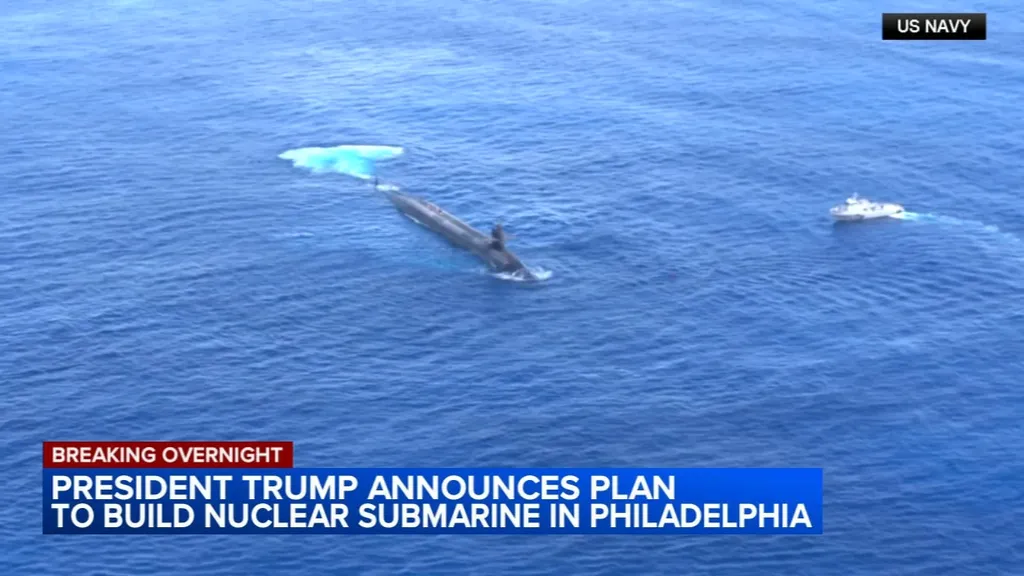President Donald Trump has announced a landmark agreement to share nuclear submarine technology with South Korea, a move that underscores the evolving dynamics of the US-South Korea alliance and the geopolitical tensions in the Indo-Pacific region. The decision, made during Trump’s meeting with South Korean President Lee Jae-myung in Seoul, signals a significant shift in defence cooperation and could reshape the strategic balance in East Asia.
The agreement focuses on the transfer of nuclear-powered submarine technology, with construction slated to take place at the Philadelphia shipyard, recently acquired by South Korea’s Hanwha Group. President Lee emphasised that the deal is limited to nuclear propulsion systems and does not extend to nuclear weapons, stating, “The introduction of nuclear-powered submarines will strengthen regional security and deepen naval coordination with US forces in the Pacific Ocean.”
The discussions between the two leaders also addressed broader efforts to modernise the bilateral alliance and achieve a more balanced defence burden. This comes as both nations seek to counter North Korea’s advancing nuclear and missile programs, which continue to pose a growing threat to regional stability.
However, the transfer of such sensitive technology is not without legal and strategic complexities. US defence officials have cautioned that any such agreement would require extensive congressional review and multiple security assurances before proceeding. This underscores the delicate nature of the deal and the need for careful diplomatic and legislative navigation.
The announcement coincides with South Korea’s pledge of $150 billion to enhance US shipbuilding capacity, part of wider defence investment talks. This investment is embedded within a broader $350 billion South Korean economic package in the US, which includes large-scale energy purchases, bringing total bilateral investments to over $600 billion, according to Trump.
Strategic Implications
The decision to share nuclear submarine technology with South Korea marks a significant escalation in defence cooperation between the two nations. For the US, this move reinforces its commitment to regional security while leveraging South Korea’s industrial and financial capabilities to bolster its own defence infrastructure. For South Korea, the acquisition of nuclear-powered submarines enhances its deterrence capabilities and strengthens its naval presence in the Pacific, particularly in response to North Korea’s provocations.
However, the deal also raises questions about regional stability. North Korea’s ongoing advancements in nuclear submarine and cruise missile technology have already heightened tensions in the region. The introduction of US-built, South Korean-operated nuclear-powered submarines could further intensify the arms race, prompting North Korea to accelerate its own military programmes.
Moreover, the agreement could have broader implications for US defence policy. Sharing nuclear submarine technology with a non-nuclear-weapon state sets a precedent that may influence future alliances and partnerships. It also highlights the US’s willingness to deepen its defence ties with key allies in the Indo-Pacific, a region increasingly central to global security dynamics.
Congressional and Diplomatic Hurdles
While the announcement is a significant step forward, the path to implementation is fraught with challenges. Congressional approval is far from guaranteed, given the sensitive nature of nuclear technology transfers. Lawmakers will likely scrutinise the agreement closely, weighing the strategic benefits against the risks of proliferation and regional instability.
Additionally, the deal will require extensive diplomatic efforts to ensure that South Korea adheres to strict non-proliferation agreements and maintains transparency in its use of the technology. Any missteps could undermine trust between the US and its allies, as well as within international forums dedicated to nuclear non-proliferation.
The agreement also comes at a time of heightened geopolitical tensions, with China and Russia closely monitoring developments in the Indo-Pacific. Both nations have expressed concerns over the strengthening of US alliances in the region, viewing such moves as potential threats to their own strategic interests. The US and South Korea will need to navigate these sensitivities carefully to avoid further escalation.
Economic and Industrial Impact
Beyond its strategic implications, the agreement has significant economic and industrial consequences. The Philadelphia shipyard, now under Hanwha Group’s ownership, stands to benefit from the influx of defence contracts and technological transfers. This could position South Korea as a key player in the global defence industry, enhancing its reputation for advanced engineering and military innovation.
The $150 billion investment in US shipbuilding capacity also underscores South Korea’s commitment to strengthening its defence industrial base. By partnering with US shipyards, South Korea can leverage American expertise while simultaneously expanding its own technological capabilities. This symbiotic relationship could lead to further collaborations in other defence sectors, fostering a more integrated trans-Pacific defence industrial complex.
The broader $350 billion investment package in the US economy further cements the economic ties between the two nations. This includes energy purchases and other economic initiatives that could have long-term benefits for both countries. For the US, the investment provides a much-needed boost to its industrial and energy sectors, while for South Korea, it offers a strategic foothold in the US market and strengthens its position as

